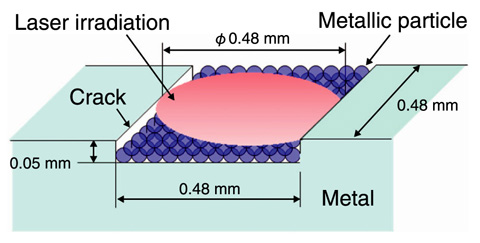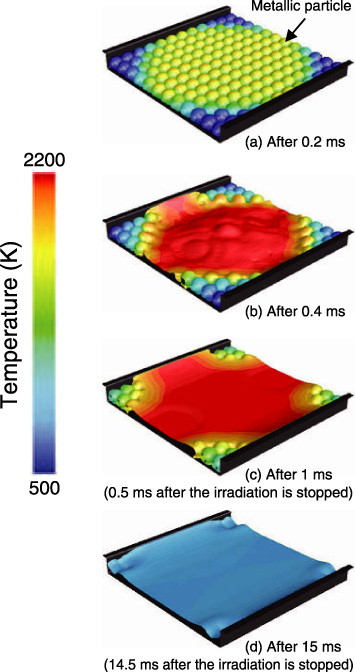
Fig.7-7 An example of crack repair using laser welding

Fig.7-8 Time variations of the predicted temperature distribution in the crack
As a part of the development of a repair technique based on laser welding for nuclear power plants, we are developing a three-dimensional numerical analysis method to simulate the melting and solidification of metals by fiber-laser irradiation.
The outline of the laser welding process is shown in Fig.7-7. As an example, when a crack is detected on the outer surface of a pressure vessel in a nuclear power plant, minute metallic particles are first sprayed on it, and then the particles are melted by using a laser so that they seal the crack. Finally, the outer surface of that can be repaired.
In order to enable the laser welding simulation, a mechanistic liquid-gas two-phase flow analysis method which has already developed is extended for simulating the phase change between the liquid and solid phases, on the basis of the melting and solidification temperatures of the metal. In the present analysis, the laser output 160 W is irradiated roundly up to 0.5 ms to the minute metallic particles as shown in Fig.7-7.
Fig.7-8 shows the predicted temperature distributions in a crack. (a) The temperature of the metallic particles increases in the circular domain irradiated by the laser; (b) the metallic particles melt when the temperature reaches their melting temperature, and the irradiation is stopped 0.5 ms from the start; (c) the metallic particles outside the circular domain melt because of the residual heat, and the temperature decreases gradually with time; finally, (d) solidification of the melted metallic particles occurs.
The present numerical analysis is indispensable and can be used as a substitute for similar experiments. This research has received high evaluation from the related societies, such as winning a best paper award at the International Symposium on Visualization in Joining & Welding Science through Advanced Measurements and Simulation (Osaka, 2010).